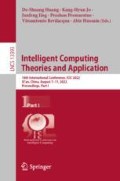Abstract
Aim at the problem of large computation and low efficiency of traditional graph convolutional neural networks, a method of extracting bearing fault features based on graph wavelets is proposed. Graph wavelet has the advantages of sparsity and locality, which can provide higher efficiency and better interpretation for graph convolution. Firstly, the fault diagnosis signals of bearing are transformed into ring graph signals. The short bearing fault vibration segment signals are used as nodes, and a set of complete graph signals are formed by edge connection. Secondly, the compressed sparse row sparse matrix of the graph signal is calculated. Finally, the graph wavelet approach is used to extract defect features and classify bearing fault. The experimental results suggest that the graph wavelet-based bearing fault feature extraction approach has good pattern recognition and is a good method for automatic fault feature extraction and pattern identification.
Access this chapter
Tax calculation will be finalised at checkout
Purchases are for personal use only
References
Krizhevsky, A., Sutskever, I., Hinton, G.: ImageNet classification with deep convolutional neural networks. Adv. Neural. Inf. Process. Syst. 25(2), 1097–1105 (2012)
Farabet, C., et al.: Learning hierarchical features for scene labeling. IEEE Trans. Pattern Anal. Mach. Intell. 35(8), 1915–1929 (2013)
Hirschberg, J., Manning, C.D.: Advances in natural language processing. Science 349(6245), 261–266 (2015)
Sun, S., Luo, C., Chen, J.: A review of natural language processing techniques for opinion mining systems. Inf. Fusion 36, 10–25 (2017)
Young, T., Hazarika, D., Poria, S., et al.: Recent trends in deep learning based natural language processing. IEEE Comput. Intell. Mag. 13(3), 55–75 (2018)
Dai, X.: Application of artificial intelligence in industrial robotic systems. China-Arab Sci. Technol. Forum 1, 99–101 (2021)
Zheng, W.: Research on Representation Learning Algorithm Based on Graph Wavelet Neural Network, pp. 1–65. Anhui University, Hefei (2021)
Zhao, Z., Wu, S., Qiao, B., et al.: Enhanced sparse period-group lasso for bearing fault diagnosis. IEEE Trans. Ind. Electron. 66(3), 2143–2153 (2019)
Wang, S., et al.: Matching synchrosqueezing wavelet transform and application to aeroengine vibration monitoring. IEEE Trans. Instrum. Meas. 66(2), 360–372 (2017)
Sun, C., Ma, M., Zhao, Z., et al.: Sparse deep stacking network for fault diagnosis of motor. IEEE Trans. Ind. Inf. 14(7), 3261–3270 (2018)
Li, H., Zhang, Q., Qin, X., et al.: Bearing fault diagnosis method based on short-time Fourier transform and convolutional neural network. Vibr. Shock 37(19), 124–131 (2018)
Yan, R., Lin, W., Gao, S., et al.: Analysis of circuit breaker fault diagnosis based on wavelet time-frequency diagram and convolutional neural network. Vibr. Shock 39(10), 198–205 (2020)
Kipf, T.N., Welling, M.: Semi-supervised classification with graph convolutional networks. In: Proceedings of the International Conference on Learning Representations, pp. 1–14 (2016)
Xu, B., et al.: Graph wavelet neural network. In: Proceedings of the International Conference on Learning Representations, pp. 1–13 (2019)
David, K.: Wavelets on graphs via spectral graph theory. Appl. Comput. Harmon. Anal. 30(2), 129–150 (2011)
Li, K.: School of Mechanical Engineering. Jiangnan University, Wuxi (2019). http://mad-net.org:8765/explore.html?t=0.5831516555847212
Acknowledgement
This research is a part of the research that is sponsored by the Wuhu Science and Technology Program (No. 2021jc1–6).
Author information
Authors and Affiliations
Corresponding author
Editor information
Editors and Affiliations
Rights and permissions
Copyright information
© 2022 The Author(s), under exclusive license to Springer Nature Switzerland AG
About this paper
Cite this paper
Li, X., Li, H. (2022). Research on Bearing Fault Feature Extraction Based on Graph Wavelet. In: Huang, DS., Jo, KH., Jing, J., Premaratne, P., Bevilacqua, V., Hussain, A. (eds) Intelligent Computing Theories and Application. ICIC 2022. Lecture Notes in Computer Science, vol 13393. Springer, Cham. https://doi.org/10.1007/978-3-031-13870-6_17
Download citation
DOI: https://doi.org/10.1007/978-3-031-13870-6_17
Published:
Publisher Name: Springer, Cham
Print ISBN: 978-3-031-13869-0
Online ISBN: 978-3-031-13870-6
eBook Packages: Computer ScienceComputer Science (R0)

